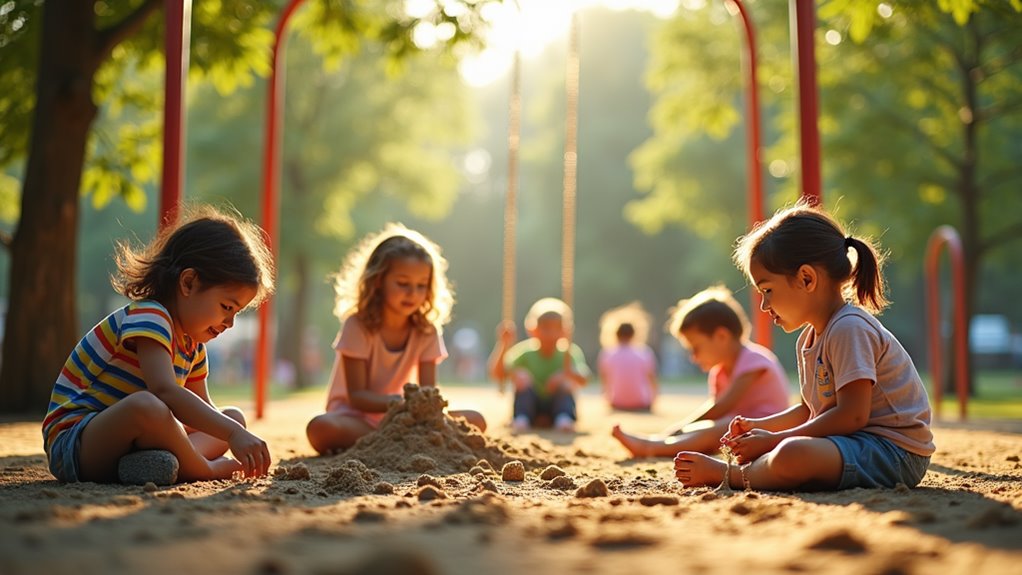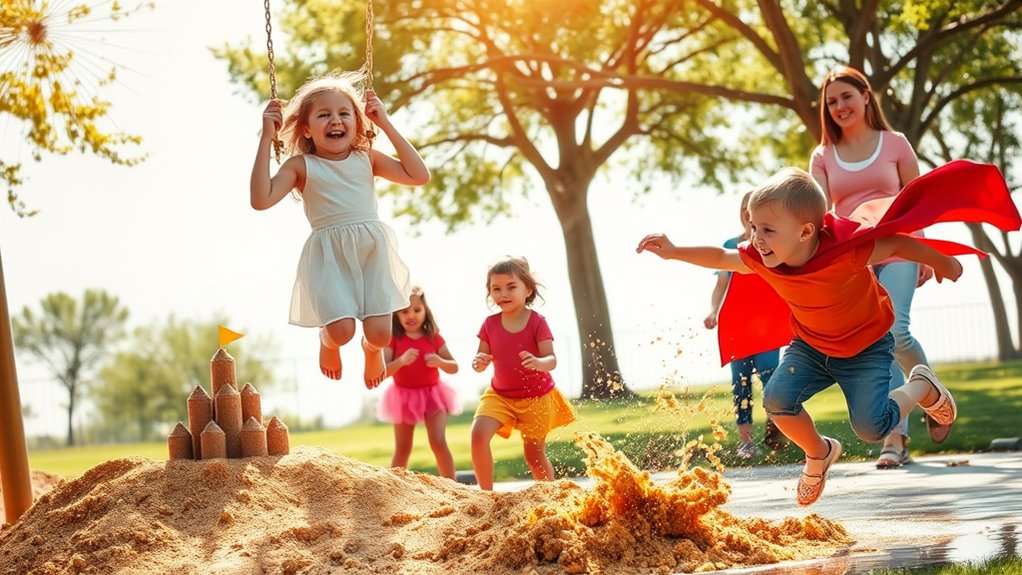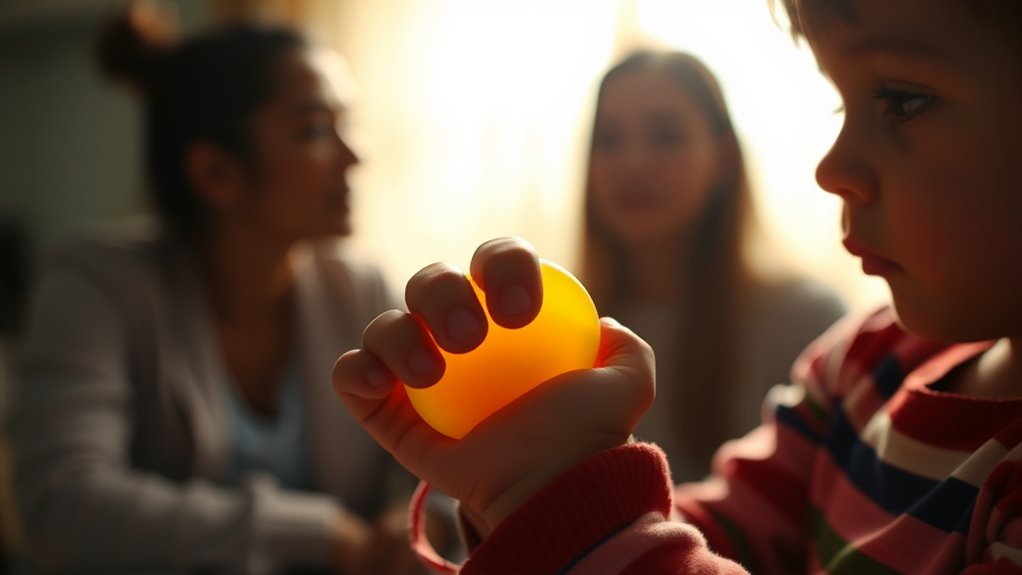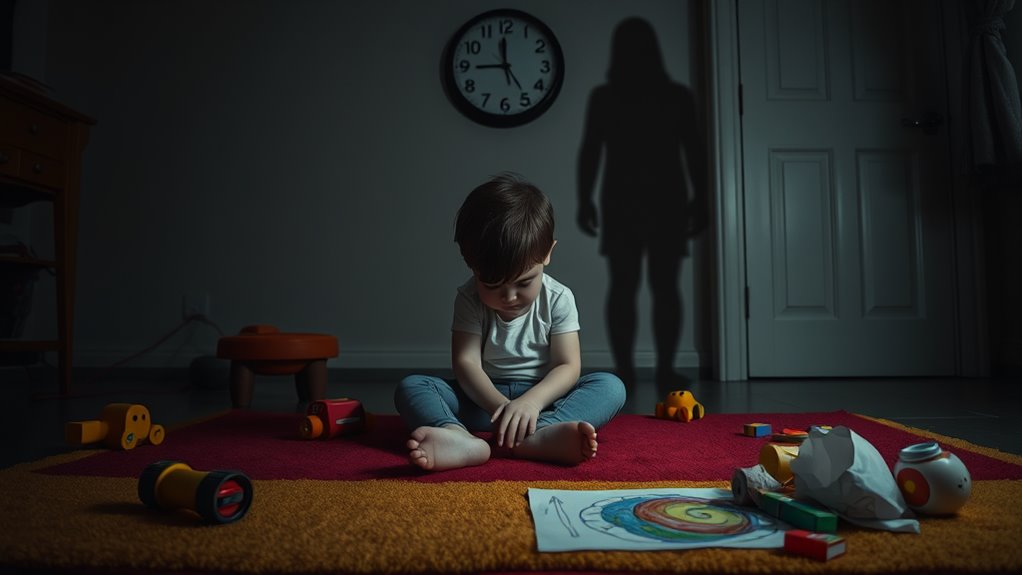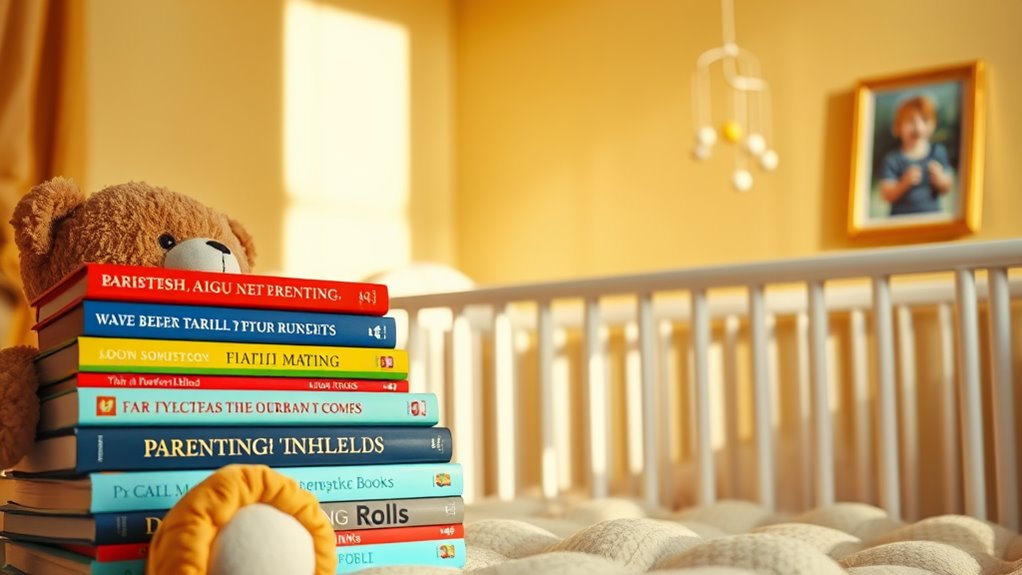Your child’s behavior is shaped by their environment, like a gardener tending to a delicate flower. A loving family fosters confidence, while a chaotic home can lead to worry. The community matters, too—friendly neighborhoods encourage kindness, while unsafe ones might instill fear. Schools play a big role, providing positive connections or, unfortunately, a breeding ground for bullying. Plus, factors like where you live and your family’s financial situation affect access to resources. Understanding these elements helps you support your child better. Curious to find out more about how different environments influence behavior? There’s plenty more to explore!
Family Dynamics
Family dynamics play an essential role in shaping a child’s behavior and development. When you think about it, your family is like a team! Each member has a role, and how everyone interacts can make a big difference in how you grow up.
If your home is filled with love and support, you’re likely to feel secure and confident. On the flip side, if there’s constant arguing or tension, it might make you feel anxious or unsure of yourself.
Kids often learn by watching their parents. If you see kindness, respect, and teamwork, you’re likely to carry those values into your life. But, if you witness negative behaviors, like yelling or blaming, those might stick, too. It’s a little like picking up a snack from a buffet—you grab what looks good!
Communication is another huge part of family dynamics. Open conversations can create a safe space for you to express feelings and ask questions. When you feel heard, it boosts your self-esteem and strengthens your relationships.
Community Influence
A strong community can greatly shape a child’s behavior and outlook on life. When kids grow up in a friendly neighborhood, they’re more likely to feel safe and supported. Think about it: where you live influences how you play, learn, and even dream. If your community promotes kindness, teamwork, and respect, you’ll probably pick up on those values too!
In a positive community, you might find opportunities for teamwork, whether it’s through sports, clubs, or even volunteer work. These experiences teach important life skills like communication and empathy. Plus, when kids see adults modeling good behavior, it encourages them to follow suit. It’s like having a bunch of role models right outside your door!
On the flip side, if you’re in a community that struggles with crime or negativity, it can be tough. Those challenges can lead to feelings of fear or hopelessness.
But remember, community isn’t just about where you live; it’s also about the people. So, whether it’s neighbors, friends, or local groups, engaging with your community can help you grow into a well-rounded individual. After all, a strong community can turn a good kid into a great one!
Educational Settings
While community plays an essential role in shaping a child’s behavior, the environment within educational settings is equally influential. Schools are more than just places to learn math and science; they’re also where kids develop social skills and learn how to interact with others.
Imagine sitting in a classroom filled with bright colors, encouraging teachers, and friendly classmates. That positive atmosphere can make a huge difference in how you feel about learning!
When you feel safe and supported, you’re more likely to participate and express your thoughts. If the school environment fosters kindness and respect, you’ll probably carry those values into your friendships, too.
On the flip side, if a school is noisy, chaotic, or filled with negativity, it can make even the brightest student feel discouraged.
Let’s not forget about extracurricular activities! Clubs and sports can help kids build confidence and teamwork skills.
So, whether you’re solving math problems or scoring goals on the soccer field, these experiences shape who you are.
In short, a nurturing educational setting can ignite a love for learning and help you thrive, while a negative one might do just the opposite. It’s all about finding the right balance!
Socioeconomic Status
Many children grow up in varying socioeconomic conditions, and this can greatly impact their behavior. When you think about it, money—or the lack of it—affects so much more than just what you can buy.
Kids from wealthier families often have access to better schools, more extracurricular activities, and even healthier food options. This means they might’ve more chances to learn and make friends.
On the flip side, children from lower-income families might face challenges like fewer resources and less support at home.
These differences can lead to a range of behaviors. For example, if a child feels stressed about their family’s financial situation, they might act out in school or struggle to focus.
You might see them being withdrawn or angry, which can be tough for them and their friends.
It’s important to remember that while socioeconomic status plays a big role, it doesn’t define who a child is. Every child has unique talents and strengths.
Cultural Background
Socioeconomic status isn’t the only factor influencing child behavior; cultural background plays a significant role as well. Think about it! Your culture shapes how you see the world, how you interact with others, and even how you express your feelings.
For instance, some cultures encourage kids to be loud and expressive, while others might value quietness and respect. This difference can lead to misunderstandings, especially in diverse settings like schools.
When a child grows up surrounded by certain traditions, values, and beliefs, those elements can shape their behavior in surprising ways. Maybe they learn to celebrate achievements with big family gatherings or, conversely, feel pressured to keep things low-key.
It’s like a recipe—each ingredient adds its own flavor to the dish!
Also, the stories and lessons passed down through generations can affect how a child reacts to challenges. If your family emphasizes hard work and resilience, you might tackle problems head-on.
On the other hand, cultural norms about authority and obedience can influence how a child interacts with teachers and adults.
Peer Relationships
Peer relationships markedly impact a child’s behavior and development, influencing everything from social skills to emotional well-being. When you think about it, friends can be like mirrors, reflecting who you’re and how you act. If you hang out with supportive pals, you’re likely to feel more confident and positive.
On the flip side, friendships with negative influences can lead to trouble, like picking up bad habits or feeling left out.
Let’s face it, maneuvering friendships can be tricky. One day you’re playing tag, and the next, someone’s upset because of a misunderstanding. That’s where communication comes in! Learning to talk things out helps kids build strong bonds. It’s like learning to ride a bike; you might fall a few times, but with practice, you get better.
Peer relationships also help kids learn empathy. When you share a snack or comfort a friend, you’re not just being nice—you’re developing important life skills.
Access to Resources
Access to resources plays a significant role in shaping a child’s behavior and development, just like friendships do. When kids have access to books, art supplies, and sports equipment, they’re more likely to explore their interests and express themselves.
Think about it: a child with a bike can ride around the neighborhood, making friends and building confidence. It’s like having a golden ticket to fun!
On the flip side, if a child lacks these resources, they might feel left out or frustrated. Imagine wanting to play soccer but not having a ball; that can make anyone feel a bit down.
Kids without access to educational materials might struggle in school, which can lead to lower self-esteem. It’s like trying to bake a cake without flour—everything falls flat!
Providing access to resources isn’t just about toys and games; it’s about creating opportunities for growth. You can help by supporting local libraries, community centers, or even sharing your own resources.
When kids have what they need, they can thrive, learn, and interact positively with others. So, let’s make sure every child gets that chance to shine!

